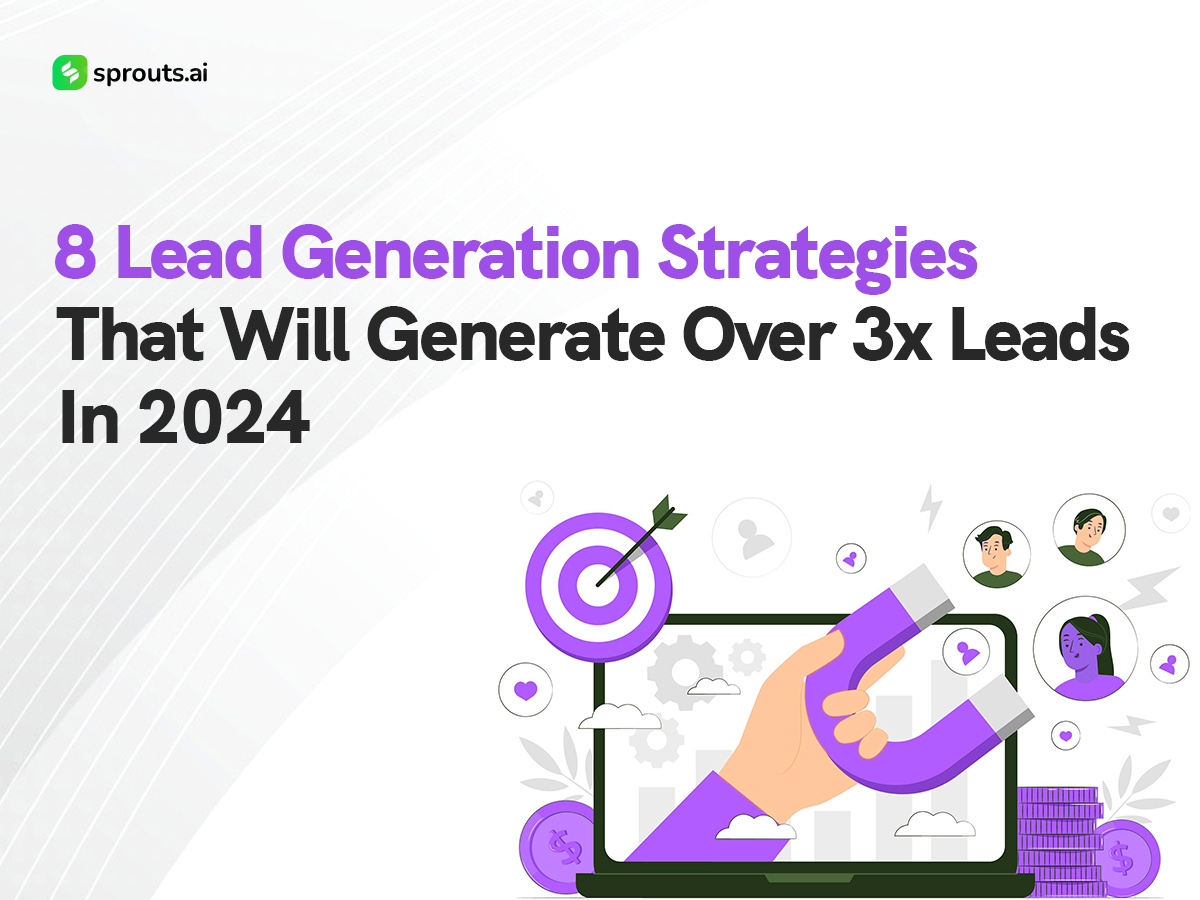Feeling frustrated by a stagnant lead pipeline? Wouldn’t it be amazing to generate a flood of high-quality leads that fuel your business growth in 2024? We all would agree that capturing attention in today’s age of reduced attention spans is akin to finding a gold nugget. The good news is innovative strategies are emerging that completely transform lead generation. These methods go beyond the usual tactics and can help you overcome the lead generation struggles you’ve been facing. Explore these powerful approaches and watch your lead flow multiply.
Personalization at Scale:
Generic messaging is no longer effective; personalization is now an expectation among consumers. Harnessing the power of data analytics and AI, businesses can tailor messages and offers to individual prospects on a large scale. This hyper-personalized approach significantly boosts engagement and conversion rates, resonating more deeply with each recipient. It’s not just about reaching the audience; it’s about connecting with them on a personal level, fostering stronger relationships and driving higher conversions.
Interactive Content:
Interactive content transcends traditional static material; it actively engages the audience and serves as a potent lead capture tool. Quizzes, calculators, and interactive infographics not only provide value to users but also gather valuable data on potential leads. This data can then be utilized to further personalize future interactions, enhancing the overall effectiveness of lead generation efforts. It’s not just about informing the audience; it’s about involving them in a meaningful way, fostering a sense of participation and investment in the brand.
SEO-Driven Content Marketing:
Content is undoubtedly essential but optimizing it for search engines ensures it reaches the right audience at the right time. Valuable content that addresses the audience’s questions, coupled with strategic SEO techniques, leads to increased organic leads. Businesses that have mastered SEO-driven content marketing have witnessed substantial growth in their lead generation efforts. It’s not just about creating content; it’s about strategically positioning it to attract and engage the target audience, driving organic traffic and generating quality leads.
Leveraging Social Proof:
Testimonials, case studies, and user-generated content play a pivotal role in building trust with potential leads. Displaying social proof prominently across digital platforms showcases past successes, instilling confidence in prospects. This enhanced trust can significantly boost lead generation, as prospects are more likely to convert when they see evidence of others’ positive experiences. It’s not just about promoting products or services; it’s about building credibility and establishing trust, creating a foundation for long-term relationships with customers.
Chatbots and Conversational Marketing:
The advent of chatbots and conversational marketing platforms has transformed lead generation processes. By engaging with prospects in real-time, businesses can swiftly qualify leads and guide them through the sales funnel. This real-time interaction enhances efficiency and effectiveness, ultimately leading to higher lead conversion rates. It’s not just about automating processes; it’s about providing personalized assistance and immediate solutions, creating seamless experiences that drive conversion and customer satisfaction.
Video Marketing:
Video content commands unparalleled attention online and has become a cornerstone of effective lead generation strategies. Businesses that incorporate video into their marketing efforts report increased engagement and conversion rates. Whether through explainer videos or live streams, the dynamic nature of video content makes it an invaluable asset for lead generation. It’s not just about conveying information; it’s about storytelling and creating immersive experiences that resonate with the audience, driving meaningful engagement and conversions.
Referral Programs:
Word-of-mouth remains one of the most potent forms of marketing. Referral programs incentivize satisfied customers to recommend products or services to their networks, effectively leveraging existing customer bases to generate new leads. By rewarding referrals, businesses foster loyalty among current customers while expanding their reach to new prospects. It’s not just about acquiring new customers; it’s about nurturing relationships and leveraging the power of advocacy to drive organic growth and brand loyalty.
Retargeting Campaigns:
Not every visitor converts immediately upon visiting a website. Retargeting campaigns enable businesses to maintain visibility and engagement with visitors who have shown initial interest but haven’t yet taken action. By staying top-of-mind through targeted ads and content, businesses increase the likelihood of converting these leads into customers over time. It’s not just about capturing attention; it’s about nurturing relationships and staying engaged with prospects throughout their customer journey, maximizing conversion opportunities and driving sustained business growth.As we stand on the brink of 2024, the strategies we’ve explored are not just pathways to increased leads; they are guiding lights leading us towards a future of unprecedented growth and connection. A fertile ground awaits those willing to sow the seeds of innovation. Here, you can nurture prospects with a blend of technology and human understanding. Successful lead generation is a strategic balance between creative outreach and data-driven analysis. Each step is measurable and optimized, allowing for agile adjustments to maximize lead acquisition. As you implement these strategies, envision a systematic process where every action is carefully monitored and refined to nurture high-value prospects. By incorporating these approaches, you can cultivate a robust lead pipeline that consistently fuels sustainable business growth.

